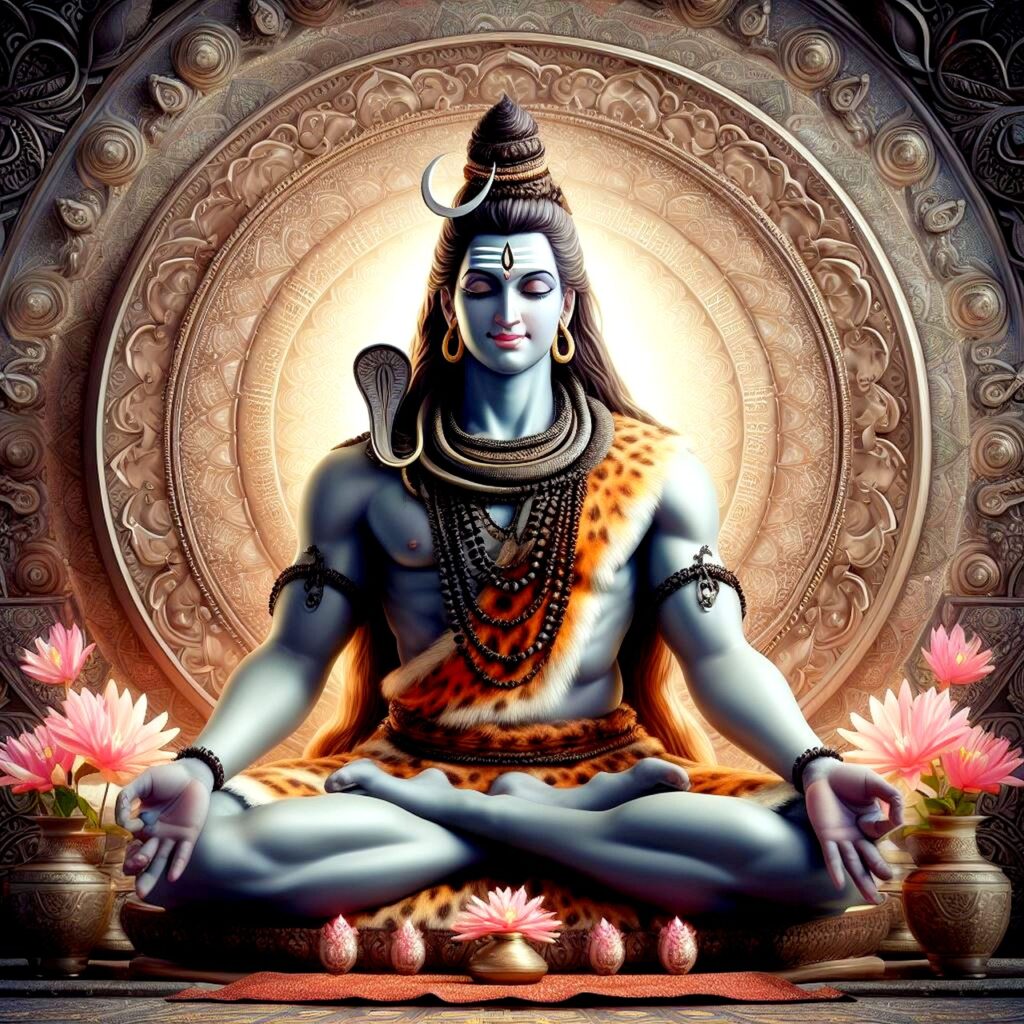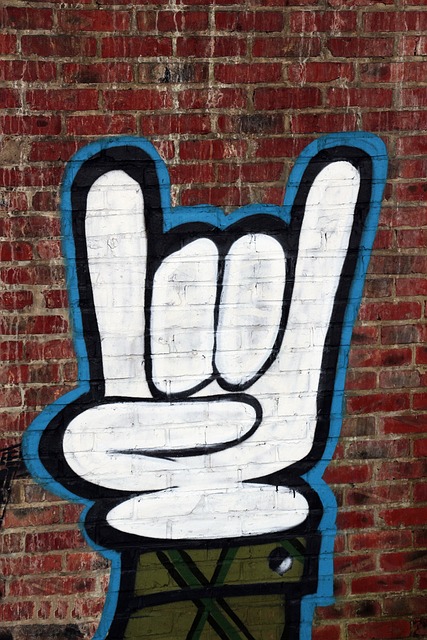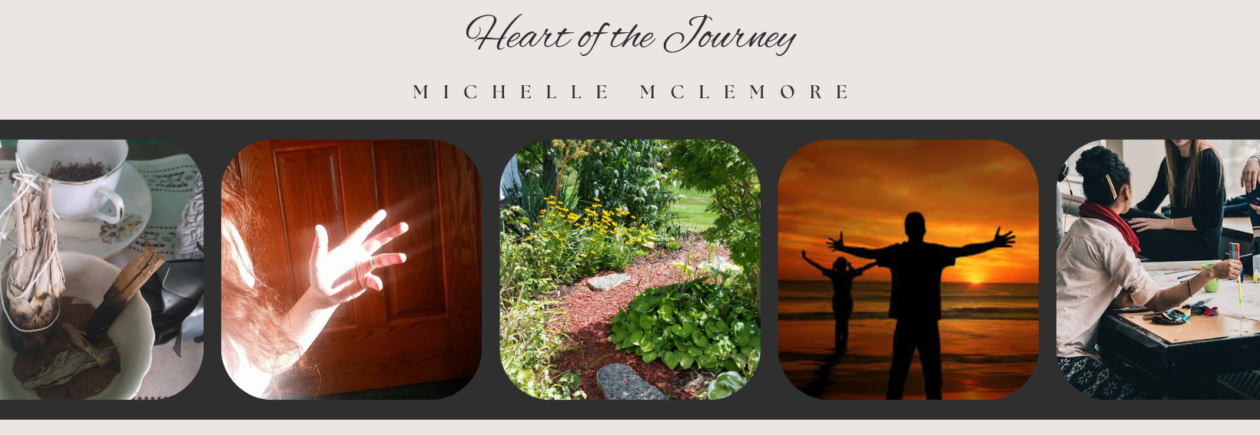By Michelle McLemore
Article first published in Crazy Wisdom Biweekly Ezine Issue #132.
The January-April Issue 86 of Crazy Wisdom Community
Journal ran an article called A Handful: Symbols, Faith,
and History. In it, McLemore explored six common hand
gestures used in art across the world in ancient to present
times and discussed how the layer of meanings added
insight for spiritual artwork. This piece follows up with
two additional commonly used gestures across cultures in
art. We have to hand it to artists—they are masters of
communicating much without any words.

Index to thumb / Gyan Mudra
Growing up my older brother liked to play the “made you
look” game. Do you know it? The concept was to make
the “ok” symbol with your hand and nonchalantly place
it somewhere on display. If your buddy (or little sister)
happened to look at it, then they were “rewarded” with
a light punch. The game dealt with learning to observe
your surroundings without reacting, as well as how to
make gestures smoothly. I can still hear Charles chuckle,
raise his dark eyebrow with blue eyes twinkling, and say,
“Gotcha!” (Later, I saw teenagers playing it in the halls
between classes at our local public school.)
Despite its use as a modern Michigan game (similar to the
“Slug Bug” with Volkswagon Beatles during the 1970s in
Ann Arbor), the okay hand gesture actually has a much
longer history with a variety of meanings.
Rhetorician Marcus Tullius Cicero (106-43 BCE) used this
same gesture with a slight modification. Joining the tip
of the index finger to the tip of the thumb while leaving
the remaining three fingers relaxed stood for “excellence”
or “perfection” in Roman oratory. Images show the hand
rotated palm upward. Perhaps it was for subconscious
manipulation of the audience as the gesture could have
been coupled with an impeccable example or argument—
at least in the orator’s mind. So, our “okay’s” ancestor was
“excellence.”
The same gesture is known as Gyan Mudra (aka Chin
Mudra) across Buddhist, Hindu, and Yoga traditions. In
Sanskrit, “Gyan” means “knowledge” or “wisdom.” The
thumb symbolizes Brahman and supreme consciousness.
Thus, joining the thumb to the index finger (the Self), is
the enlightenment from ignorance of the self to wisdom.
Surely, enlightenment is excellence.
In Auyrvedic studies, the hand position increases Vayu (air
element) which increases memory, improves the nervous
system, and assists the pituitary gland function. According
to amujayoga.com, it may improve stamina, improve sleep,
and relieve stress as well.
When the gesture is rotated with fingers pointing up,
it is called “Vitarka” and is the gesture for debate or
discussion, often used while explaining teachings of
Buddha. Raising it to chest level, the circle may be called
“the wheel of teaching”—an infinite source of knowledge and as such excellence and truth. This reflects back to the
Greco-Roman meaning of excellence during rhetoric and
teachings though the hand elevation is different.
Apana Mudra, Karana Mudra, and Mano
Cornuta—The Horns

Probably the most diversely used–and controversial hand
gesture I’ve researched–is formed by folding the ring finger
and middle fingers down toward the palm and bringing the
thumb across to their backs, held under their fingertips, or
with the three digits meeting at their tips. This leaves the
index and pinky pointing up. The gesture can be made with
the wrist tilted so the palm faces away from the body, the
palm facing the self, the palm parallel to the ground with the
fingers pointing away from the body or back of palms resting
on the thighs, facing up. Most applications hold the gesture
still.
According to EasyAryuveda.com, Apana Mudra (touching
the tips of all three digits) is said to regulate the excretory
systems and purify the body. The earliest use of mudras in
Hinduism predates sixth century B.C.E. accompanying the
singing of the Vedas. The gesture can be seen in Hindu and
Buddhist statues.
The same finger positioning with right palm facing out
is captured in a Russian Orthodox mural in the “Christ
Pantocrator” on the main dome of the Gračanica Monastery,
in Kosova first built circa 1318 C.E. In other Russian
Orthodox mosaics, the gesture is rotated sideways, palm
toward the body and fingers pointing to a Bible. It is said its
point is to literally point to the passage on the open book.
But I question, why not just use the index pointer finger
which was used for centuries in art for that purpose? Why
such a complicated finger positioning?
A variation of Apana is Karana Mudra. In this position, the
thumb is folded over the backs of the downturned digits
or held underneath. The Karana is recorded as having been
used through the ages to ward off the evil eye. Yep, there it
is again. The same position is called “Mano Cornuta” in Italian
with a literal translation of “hand” and “horn.” Amulets and
charms have been made for centuries in this form to ward off
negativity, bad luck, and ill wishes from others.
Some research suggests it is earlier linked to pantheism and
symbolism of a goat or bull. However, even Biblical excerpts
mention bull and ram sacrifices were made to please the Old
Testament God. A book on superstitions published in 1895
records a sketch of the Mano Cornuta/Karana Mudra in a few
different Christian mosaics in Ravenna, Italy. One from the
sixth century CE shows this hand signal as the hand of God
pointing down from heaven to an altar where Abel stands
on one side and Melchisedec stands on the other side both
lifting offerings. In this example, the hand gesture’s use to
mean “purification” makes more sense than to simply “Hey,
look.” Yet, it shows up in a different image of Saint Luke
with a bull (apparently a symbol for St. Luke) and the saint
is holding Karana Mudra/Mano Cornuta, palm facing forward
away from he and the bull and not toward the scriptures
being held in his left hand. Is he “pointing” to the bull?
Yes, but again, why the two fingers to point? Is he using it
to shield evil from himself and the bull? Possibly. It seems
artists of Christianity and Catholicism used the same gesture
in different ways. So perhaps it was around the Middle
Ages where either purposeful deception and re-teaching of
symbols began, or there was confusion of knowledge due to
disease and widespread war and devastation.
Leap into more modern times, and we find older Italian
citizens used the Karana mudra either with palm out or
parallel to the ground to ward off bad luck. In more recent
times, if the palm down and the wrist is twisted or swayed,
it implies the person of discussion is having an affair. Would
that type of energy be something someone might want to
ward off from themselves or their family? Quite possibly.
We see the same symbol (held with palm out away from the
body) made it into pop/rock music with a 1967 photo of The
Beatles. John Lennon is making the sign with both hands,
right palm facing him and the left hand facing away leading
to much speculation as to what he thought they meant.
From there Black Sabbath began using the sign frequently
and heavy metal goers picked it up from there. Is it a sign
for “The Devil” in Satanism? Someone else would need to
verify that. Still, if so, ironically then it is being used in total
opposite to all the other older meanings.
What can we all agree on? Cultures, religions, and artists
of every type have tried to express meaning through
hand gestures since the beginning of time. Whether you
are making silhouette shadow bunnies on the wall for
amusement, sitting in meditation using mudras to balance
and enlighten yourself, or getting wonky vibes from someone
in the office so you flick protective horns in their direction,
the use of our hands continues to be an interesting and
relevant part of ongoing human existence.
~
